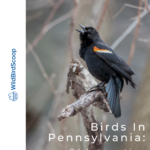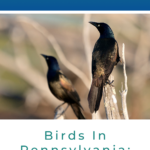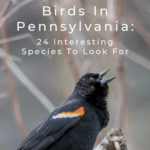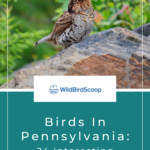Pennsylvania is known for its historic role in the nation’s history besides its status as one of the largest industrial centers in the country! In addition to all that, the state also takes pride in being one of the most bird species-dense states in North America!
According to the Pennsylvania Ornithological Records Committee (PORC), the state is home to more than 435 different species of birds. If you’re interested in learning more about the birds in Pennsylvania, this article is for you!
Today, we’ll walk you through a guide with some of the most interesting and colorful birds that you can come across in the Keystone State. So without further ado, let’s dive in and see what these birds are all about!
Red Birds in Pennsylvania
Northern Cardinal
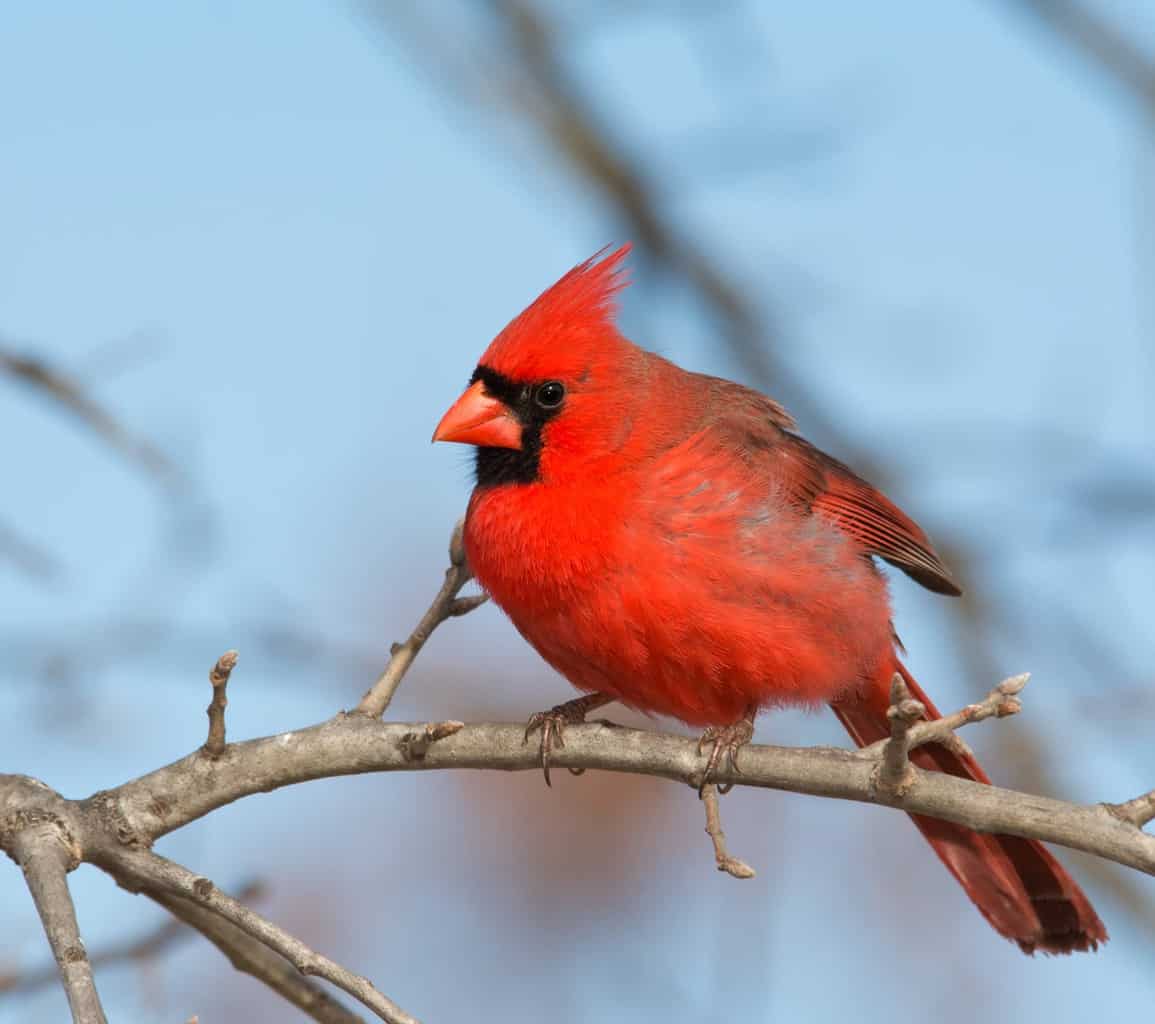
- Scientific Name: Cardinalis cardinalis
- Length: 8.3 to 9.1 inches
- Weight: 1.5 to 1.7 ounces
- Wingspan: 8.9 to 12.2 inches
We are starting with one of the most vibrant birds in the state of Pennsylvania. The Northern Cardinal is a backyard bird that is quite common during the summer.
You’ll be able to quickly identify the bird due to its unique bright red plumage that covers almost all the bird’s body.
The bird also has a black mask and a red crest on its head, which is a significant feature found in both males and females.
If you want to attract these beautiful birds to your yard, fill your feeders with sunflower seeds.
House Finch
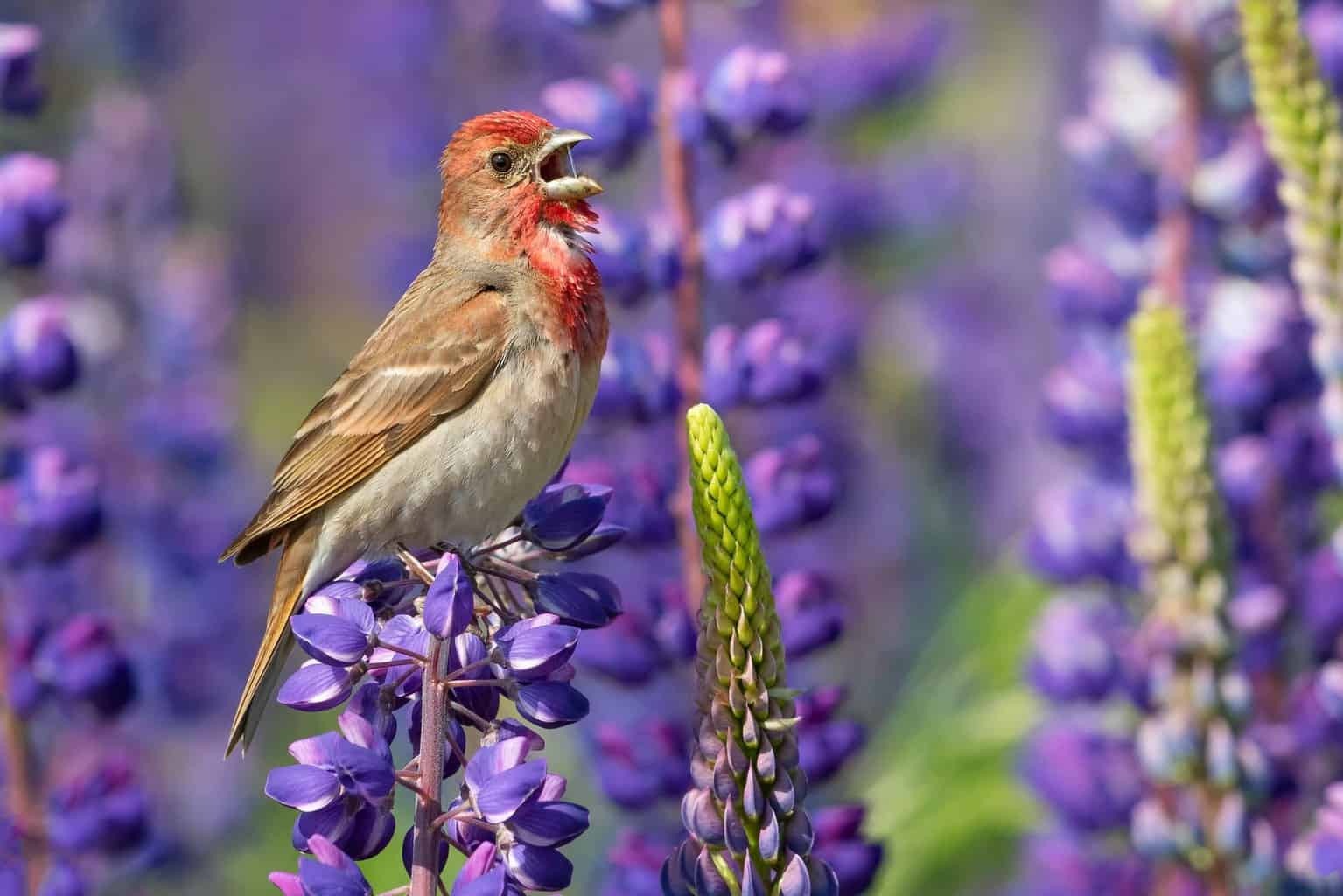
- Scientific Name: Haemorhous mexicanus
- Length: 4.9 to 6.1 inches
- Weight: 0.6 to 0.9 ounces
- Wingspan: 8.1 to 10.5 inches
The American House Finch is another widespread bird that you can find all over the country and is quite common in Pennsylvania and can be found nesting in bird boxes.
The males of the species have a rosy red plumage with brown streaks that cover most of the birds’ heads and wings.
However, the color vibrancy relies heavily on the bird’s diet. Females, on the other hand, are pale brown with touches of gray.
Red-Bellied Woodpecker
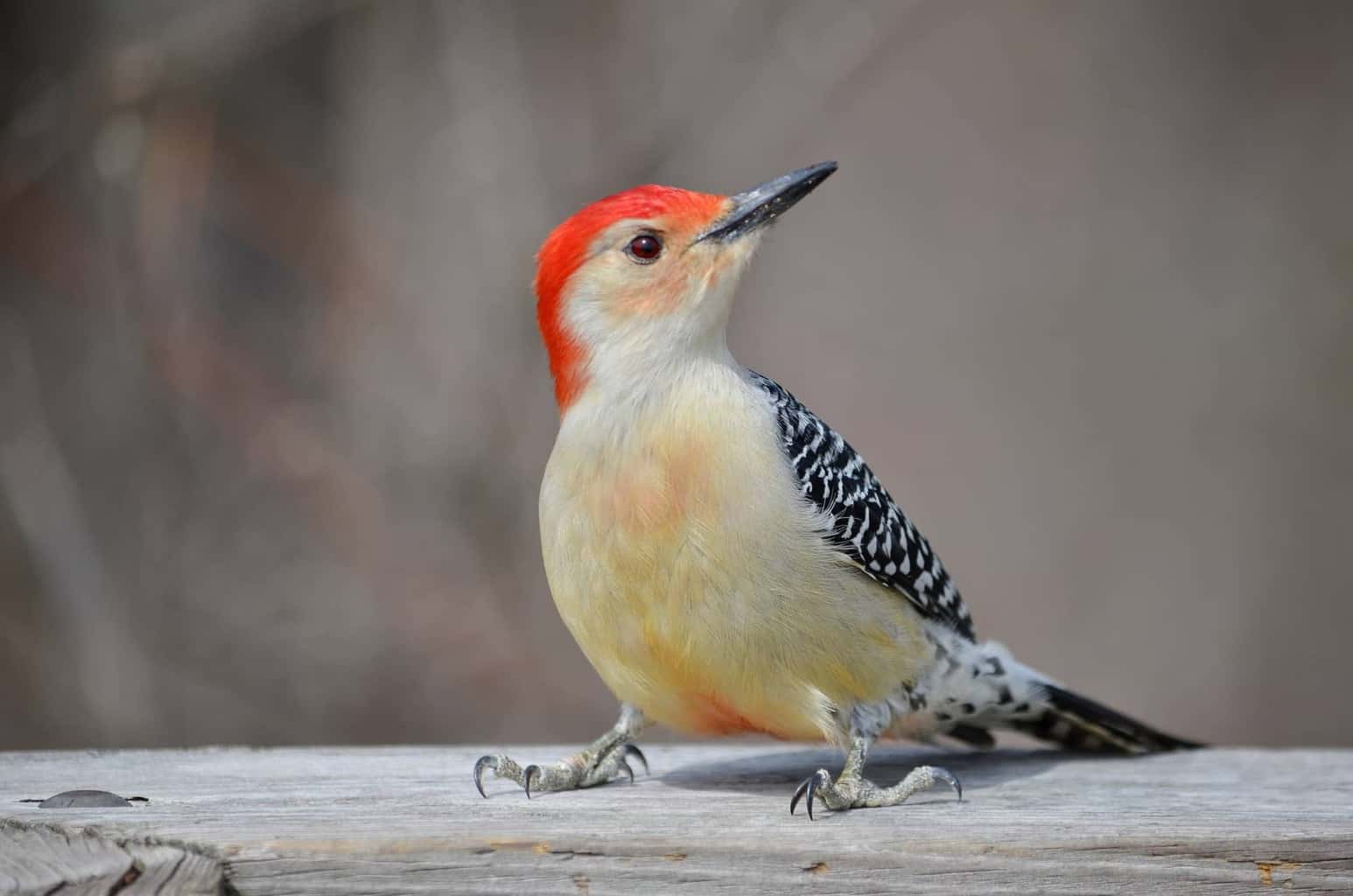
- Scientific Name: Melanerpes carolinus
- Length: 9.2 to 10.3 inches
- Weight: 2.2 to 3.2 ounces
- Wingspan: 15.7 to 17.8 inches
Woodpeckers are among the most common range of bird species that you can find in Pennsylvania. Among the most common birds of all of them is the Red-bellied Woodpecker.
This fascinating bird has several characteristic features that make them relatively easy to identify. For instance, the bird has a remarkably vibrant red patch that runs from its back to the top of its head.
The bird also has a checkered back and wings and a reddish wash on its belly, hence the species’ names.
The Red-bellied Woodpecker is typically attracted to bodies of water like small rivers and ponds, but you can also find them hanging around residential areas looking for insects.
Red-Winged Blackbird
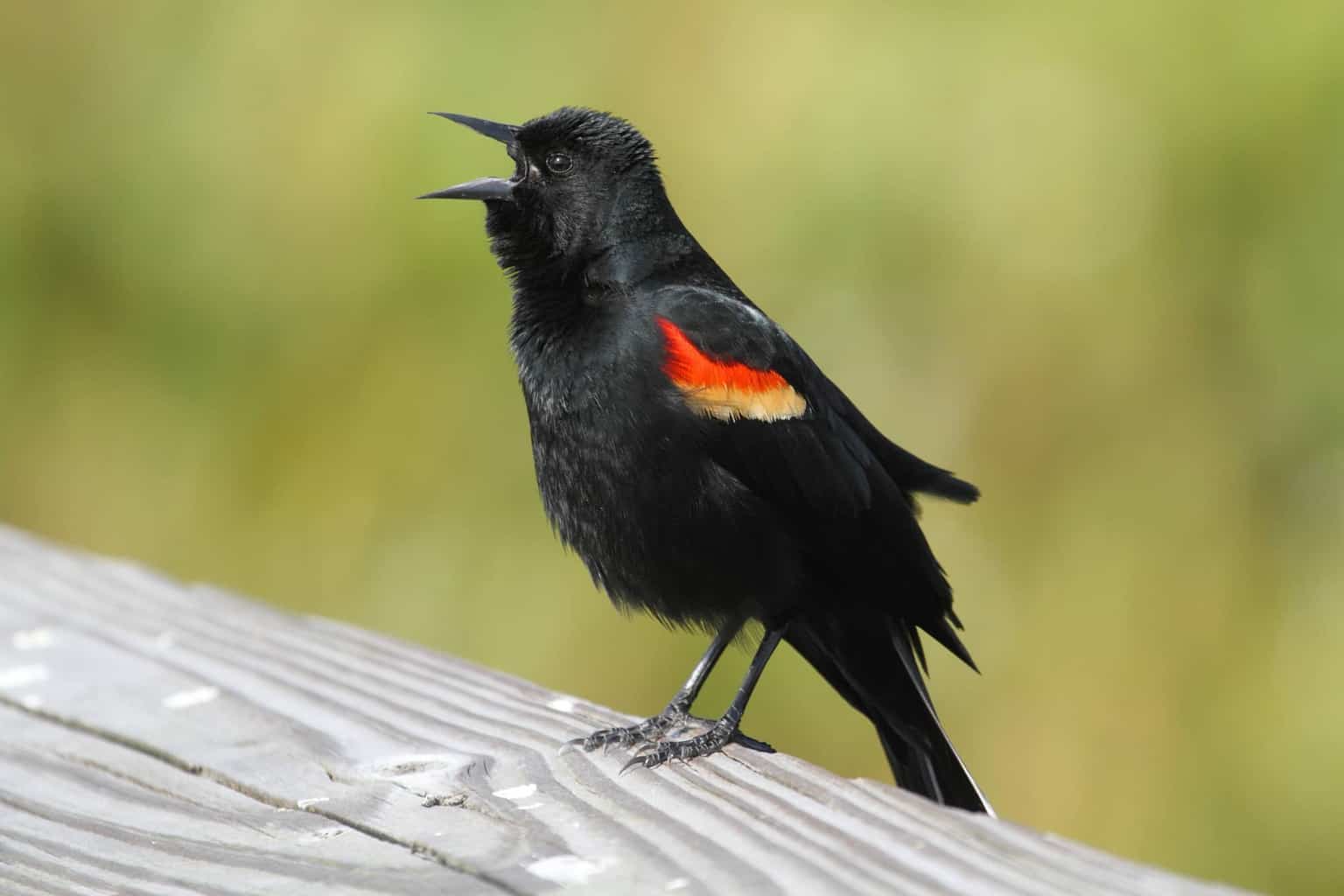
- Scientific name: Agelaius phoeniceus
- Length: 6.7 to 9.1 inches
- Weight: 1.1 to 2.7 ounces
- Wingspan: 12.2 to 15.8 inches
One of the most common species of blackbirds found in Pennsylvania is the remarkable Red-winged Blackbird.
This bird has a red patch on the top of its shoulder, extending in shades of orange and yellow down the first half of the wing. The rest of the bird has a standard shiny black plumage like other blackbirds.
Females have a different plumage pattern that is mostly brown with white streaks running through the bird’s belly and wings. Like most blackbirds, this species is attracted to bodies of water, such as backyard fountains.
Pileated Woodpecker
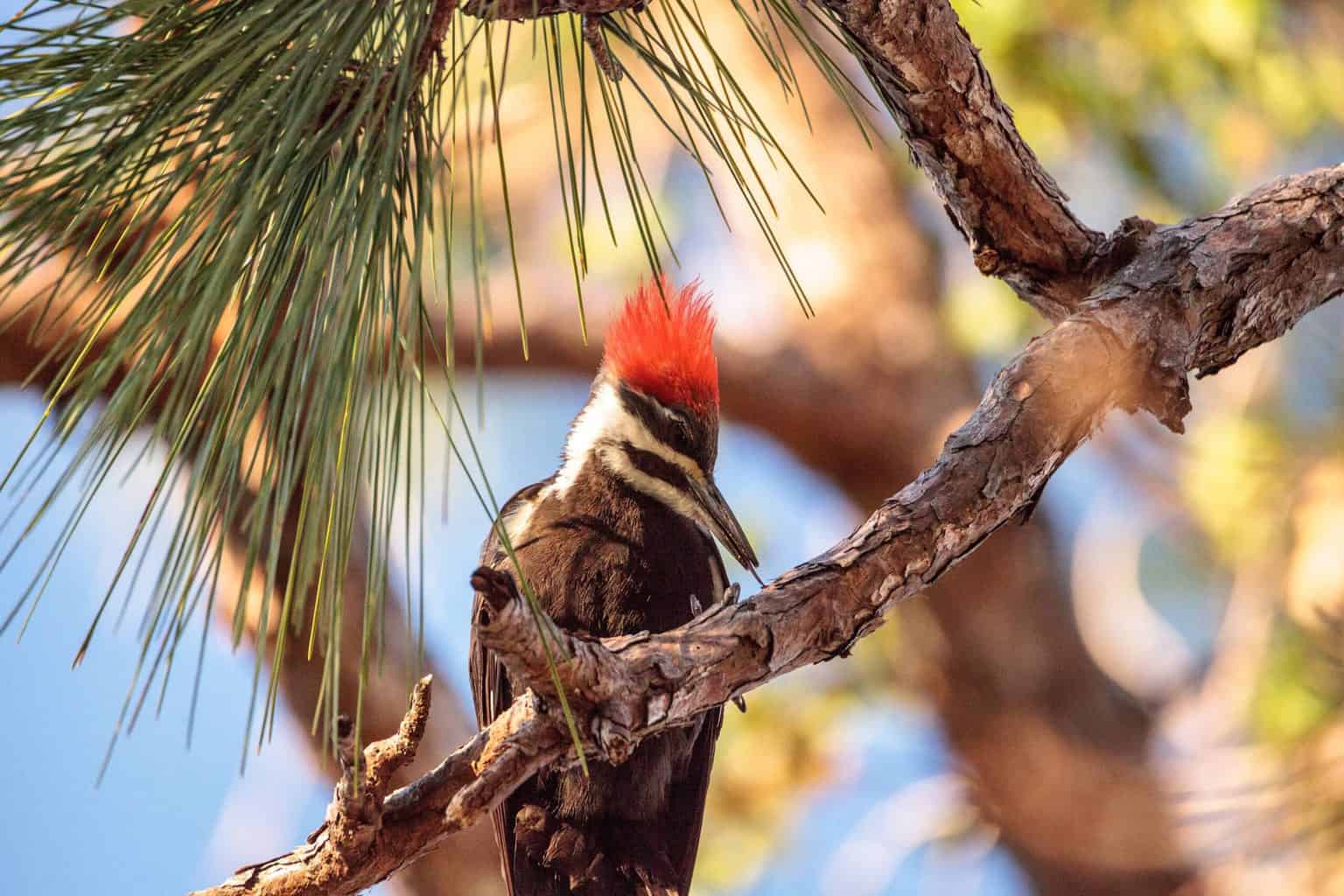
- Scientific Name: Dryocopus pileatus
- Length: 16 to 19 inches
- Weight: 8.8 to 14.1 ounces
- Wingspan: 26 to 30 inches
The Pileated Woodpecker is one of the largest woodpeckers that you can find in the state of Pennsylvania. They’re also incredibly unique and mesmerizing in terms of looks and behavior.
The bird has an iconic red cap over its head, the main inspiration behind Universal Studios mascot “Woody Woodpecker.”
The bird is known for digging huge rectangular holes in trees while foraging for insects. Additionally, they feed on nuts and fruits as a secondary snack.
Downy Woodpecker
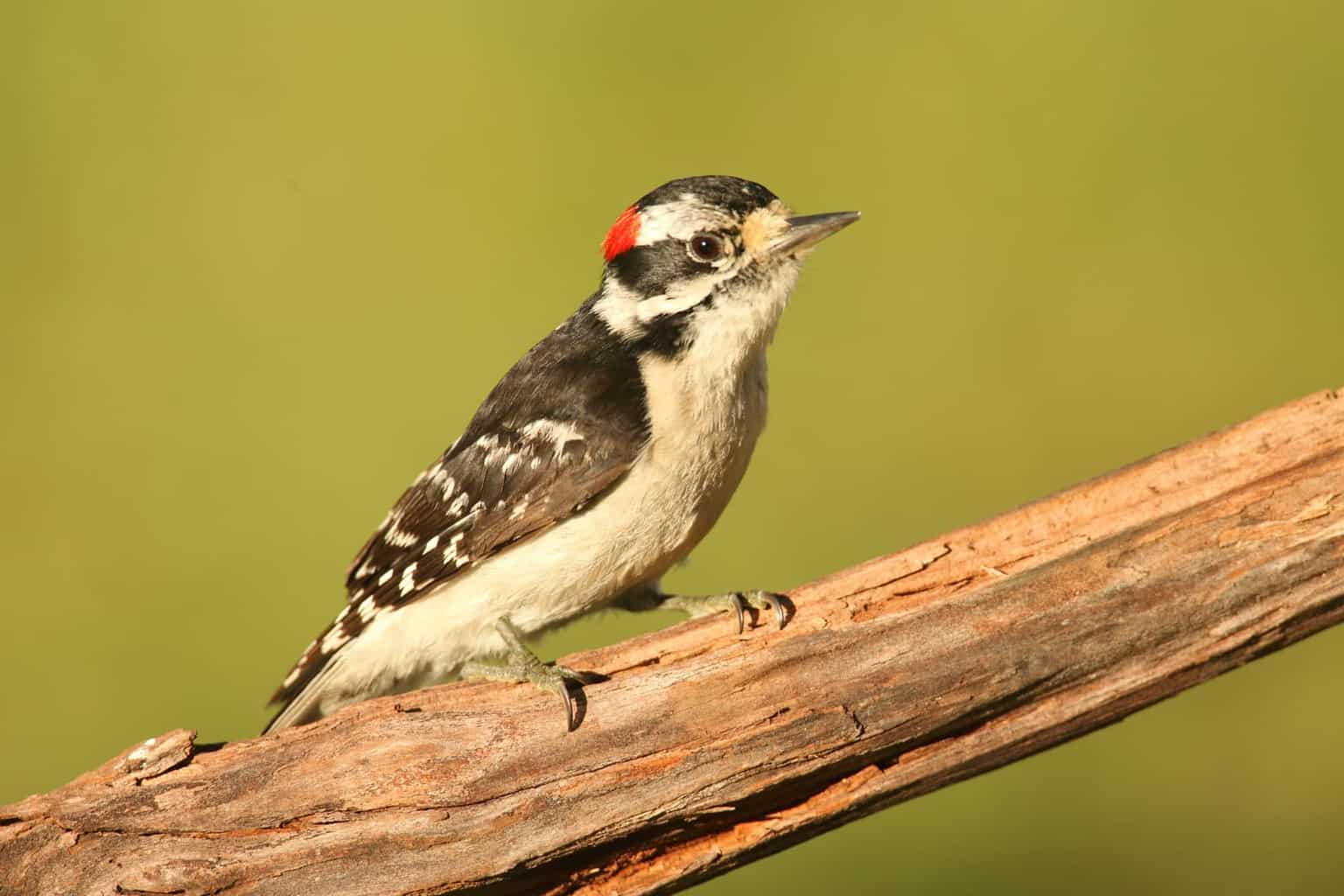
- Scientific Name: Dryobates pubescens
- Length: 5.5 to 7.1 inches
- Weight: 0.7 to 1.1 ounces
- Wingspan: 9.8 to 12.2 inches
While Pileated and Red-bellied Woodpeckers are pretty impressive in terms of looks, no species of woodpeckers are more common in Pennsylvania than the Downy Woodpecker.
These woodpeckers are relatively small compared to other species and have a characteristic red patch on their napes that makes them easy to identify. They have a black striped head and their wings have white spots. They also have white underparts and a black tail with white outer tail feathers.
Other less common woodpeckers (like the Hairy Woodpecker) share these features with the Downy Woodpeckers, but they’re noticeably larger.
The bird is also very well-adapted to residential areas and will typically forage around backyards, especially if you have fruits, seeds, peanut butter, or even food remains left in the open.
Blue Birds in Pennsylvania
Blue Jay
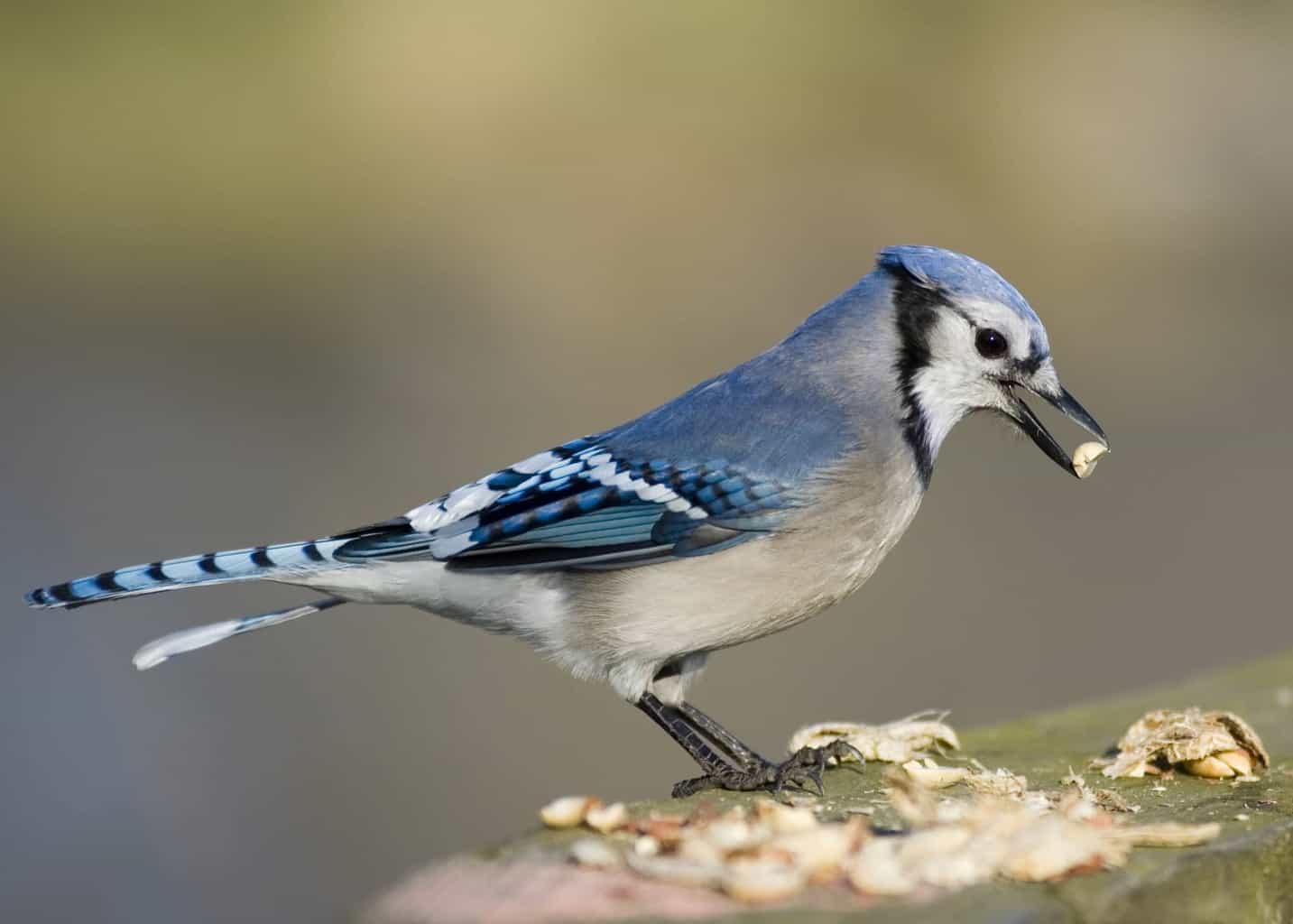
- Scientific Name: Cyanocitta cristata
- Length: 8.6 to 11.8 inches
- Weight: 2.5 to 3.5 ounces
- Wingspan: 13.3 to 16.9 inches
Blue Jays are among the most popular blue-colored birds in the state of Pennsylvania and neighboring states. You can easily identify these birds by their blue crest and remarkably vibrant cyan color, especially on the tail and blue wings.
Despite the color intensity, you should remember that this color is actually due to feather structure and not pigments. In fact, if you hold an individual Blue Jay feather, it will be white!
Although they rock a majestic look, many people (and birds) find Blue Jays annoying due to their remarkably loud calls and imitations of large raptors.
Yet, Blue Jays are known for how smart and resourceful they can be, as they’re among the few birds capable of cracking hard nuts open!
Common Grackle
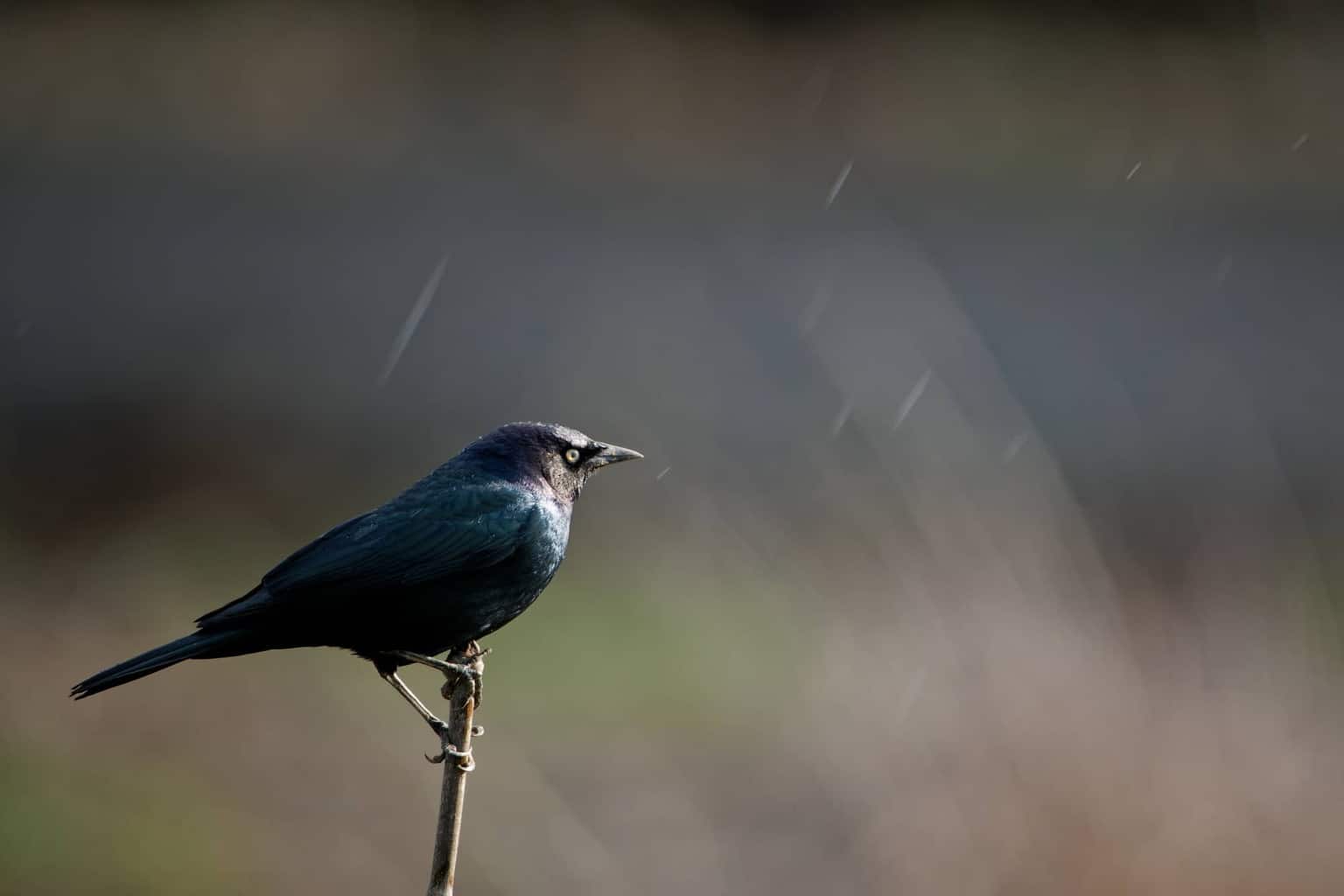
- Scientific name: Quiscalus quiscula
- Length: 11.0 to 13.4 inches
- Weight: 2.6 to 5.0 ounces
- Wingspan: 14.2 to 18.1 inches
The Common Grackle is a medium-sized lanky bird. It rocks a relatively long bill and a long tail that bends upwards like other birds in the family of blackbirds.
The bird has a unique color pattern, as both males and females of the species have iridescent blue plumage that covers the bird’s head and upper chest.
This forest bird is rarely found alone, as it likes to gather in large flocks on top of tall trees in wooded areas. Common Grackles like to communicate with each other through loud calls, so you’ll be able to spot and identify them quickly.
Barn Swallow
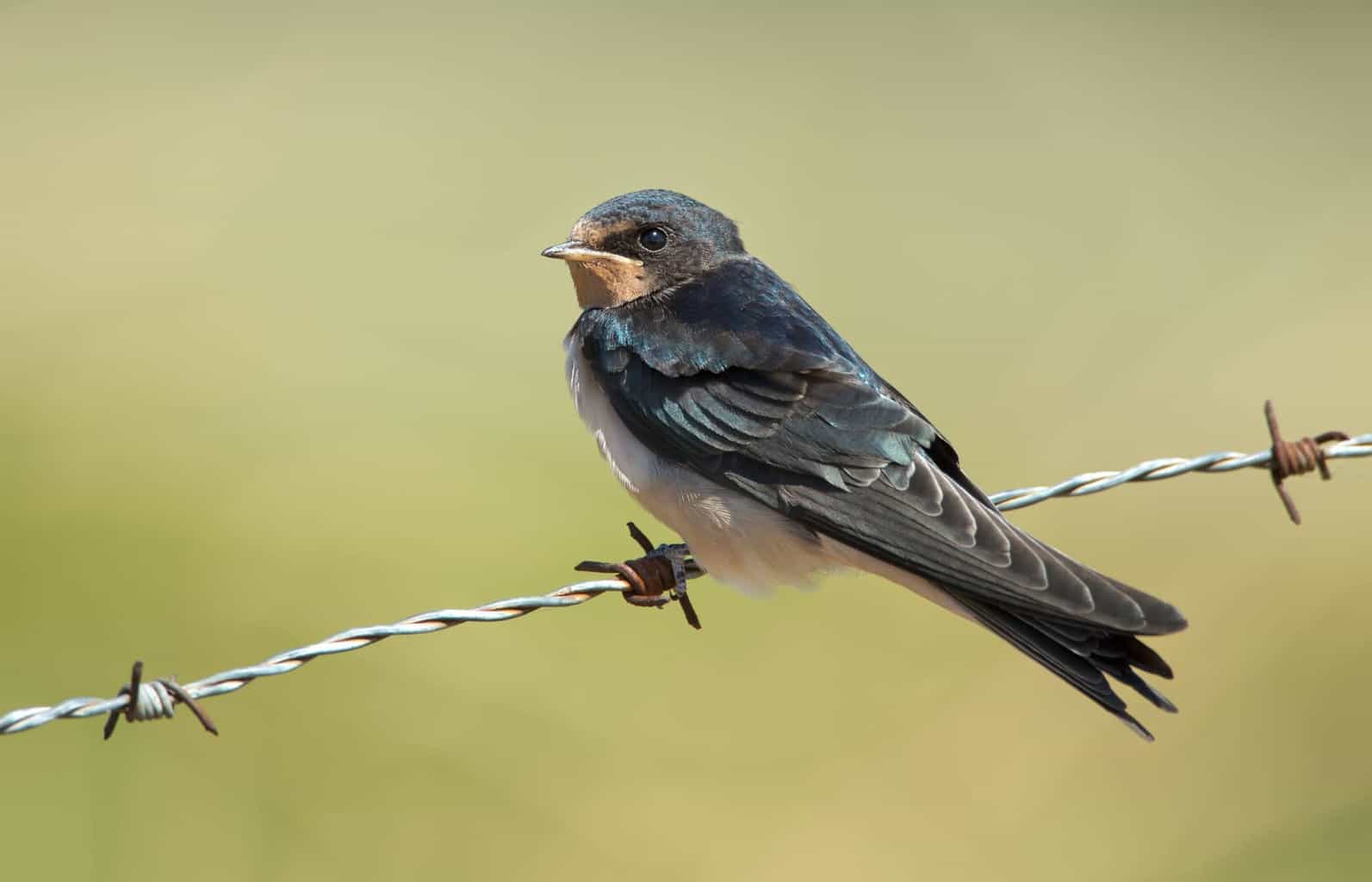
- Scientific Name: Hirundo rustica
- Length: 6.7 to 7.5 inches
- Weight: 0.5 to 0.7 ounces
- Wingspan: 12.6 to 13.6 inches
The Barn Swallow is one of the most common types of birds in the world. The bird is known for its impressive steely blue-colored plumage covering the back, tail, and wings.
The bird is a relatively small-sized one, and you can often see it perching on telephone wires or soaring above barns, open fields, and meadows.
Barns swallows like to feed on insects like bees, ants, and beetles, and food remains like cracked eggshells.
They breed in the state and migrate to Central and South America.
Eastern Bluebird
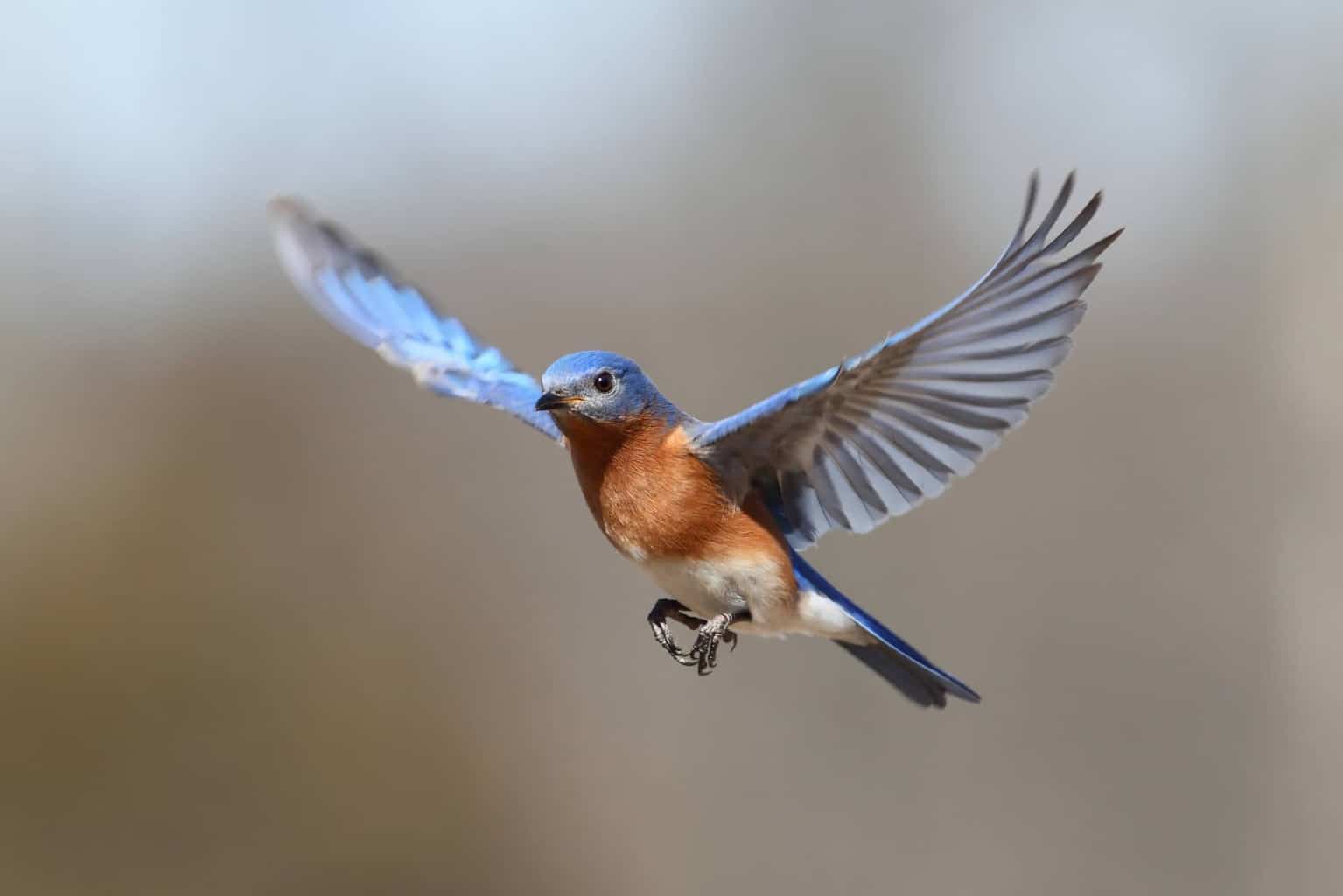
- Scientific Name: Sialia sialis
- Length: 6.3 to 8.3 inches
- Weight: 0.9 to 1.2 ounces
- Wingspan: 9.8 to 12.6 inches
As the name suggests, the Eastern Bluebird is typically found all over the eastern half of North America. However, since they prefer relatively cool weather, the birds are common in states like Pennsylvania.
Eastern Bluebirds have a beautiful blue plumage that covers the bird’s head, back, and wings. The rest of the bird’s body is bronze or brown with white underparts and belly.
If you want to spot an Eastern Bluebird, you’ll have to look for them in open fields and suburbs, as they’re quite shy and don’t typically land in backyards.
There, the birds will either soar high above you or perch on communication poles as they scout the area for small lizards, spiders, and frogs.
Green Birds in Pennsylvania
Ruby-Throated Hummingbird
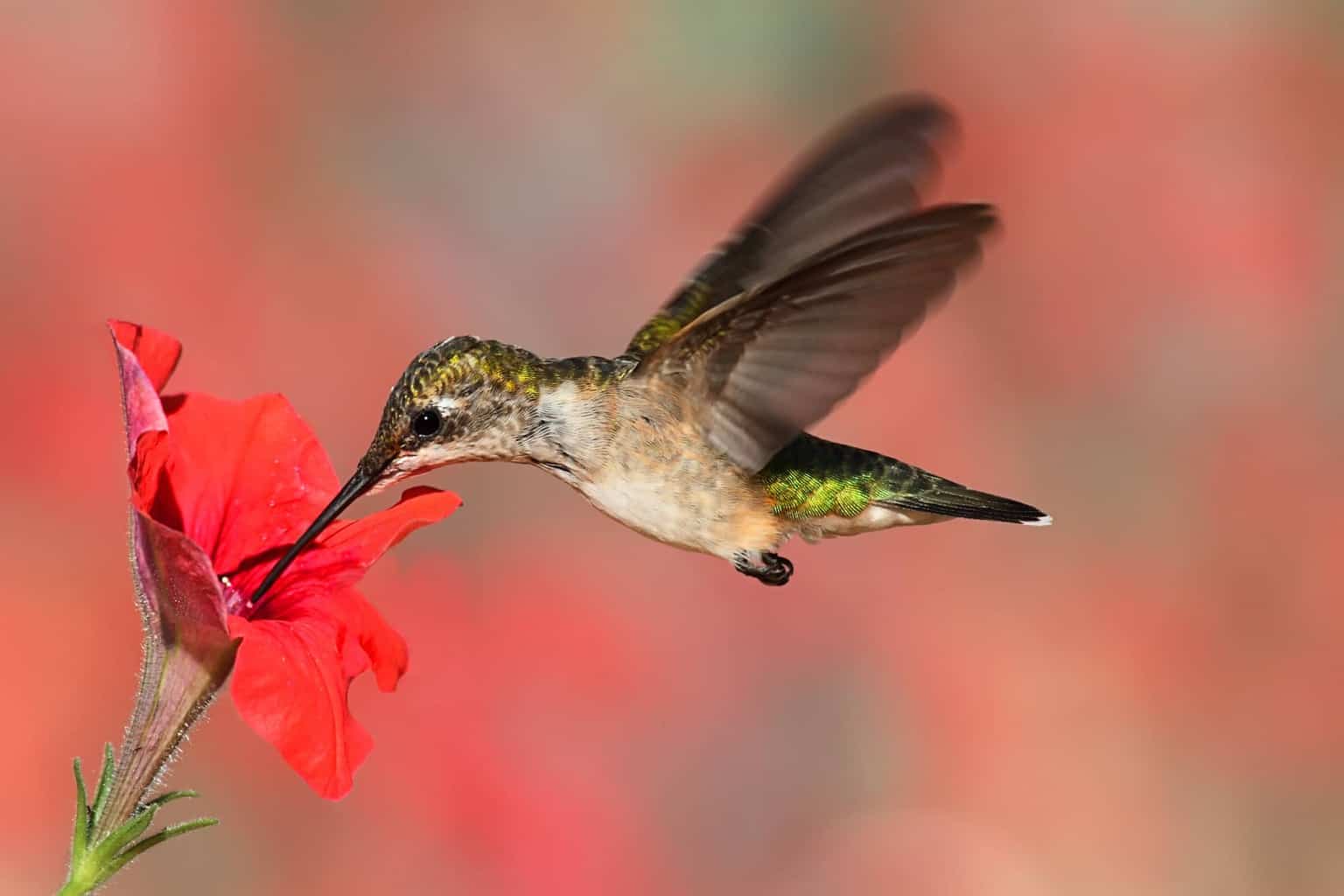
- Scientific Name: Archilochus colubris
- Length: 2.8 to 3.5 inches
- Weight: 0.1 to 0.2 ounces
- Wingspan: 3.1 to 4.3 inches
Although the green color is typically rare in birds of Pennsylvania, the Ruby-throated Hummingbird is a great showcase of the color.
The hummingbird is typically found in the state throughout the summer mating season.
Males have an olive green body with white underparts and a green wash. However, the most distinctive aspect of the bird is the ruby-red plumage with iridescent hues that the males have on their throats.
Females are primarily pale brown birds with insignificant shades of green over the back and the head and strokes of olive green covering the throat.
Blue-Headed Vireo
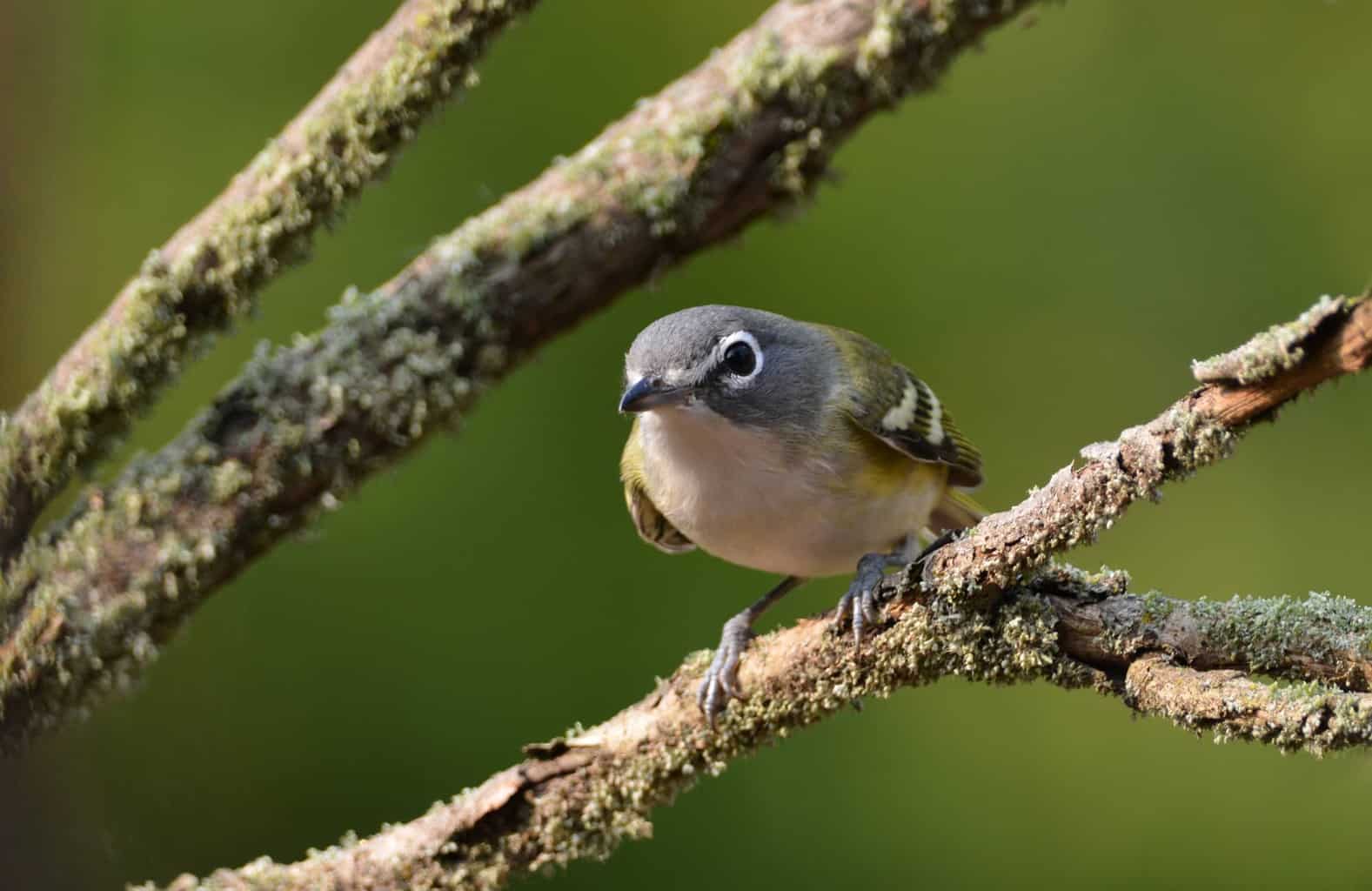
- Scientific Name: Vireo solitarius
- Length: 4.7 to 5.9 inches
- Weight: 0.5 to 0.6 ounces
- Wingspan: 8.7 to 9.5 inches
Vireos are another species of bird that typically have green plumage. Despite the bird’s name, the most prominent color of the Blue-headed Vireo is green.
The vireo is a stocky and small songbird with a relatively long tail and thick legs that distinguishes it from warblers.
Blue-headed Vireos are known for their olive-green plumage covering most of the bird’s body, including the back, tail, and wings.
However, the bird’s most characteristic features are the dark bluish-gray color of its head and the white underparts.
Orange Birds in Pennsylvania
American Robin
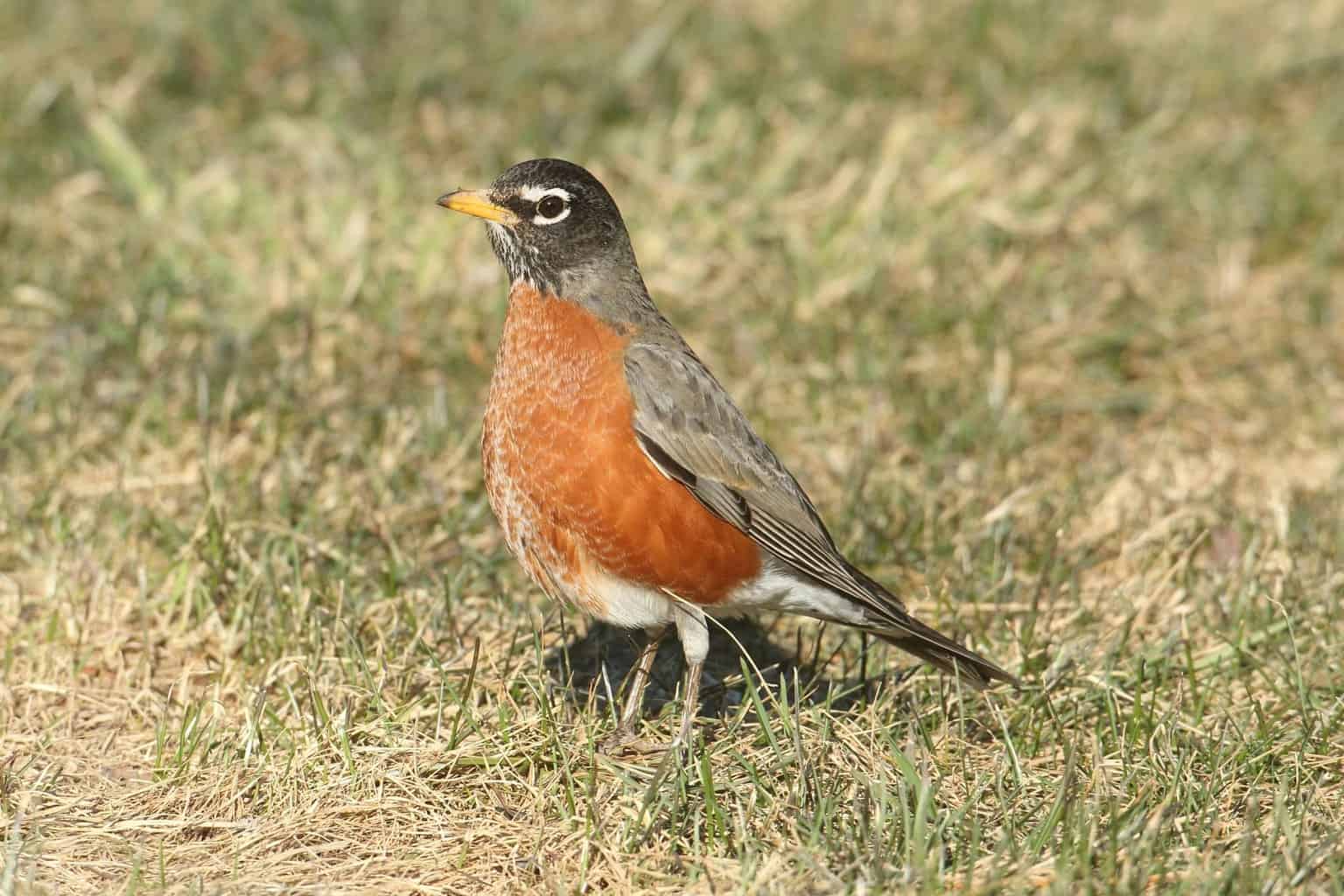
- Scientific Name: Turdus migratorius
- Length: 9.0 to 11.0 inches
- Weight: 2.3 to 2.8 ounces
- Wingspan: 14.7 to 16.5 inches
The American Robin is constantly competing with the Northern Cardinal over the number one spot as the most common bird in Pennsylvania. However, the robins are always the winner when it comes to the most common backyard bird in most of the United States.
American Robins are known for their unique plumage of rusty orange, which is one of the rarest colors in all the birds of North America.
The orange plumage covers the bird’s breasts, and the underparts, along with the rest of the bird’s body and dark head, are covered with dark black feathers.
In addition to the bird’s unique plumage, it has a beautiful song that is pleasant to the ears, and female robins lay beautiful sky blue eggs that are vibrant and easy to spot.
Baltimore Oriole
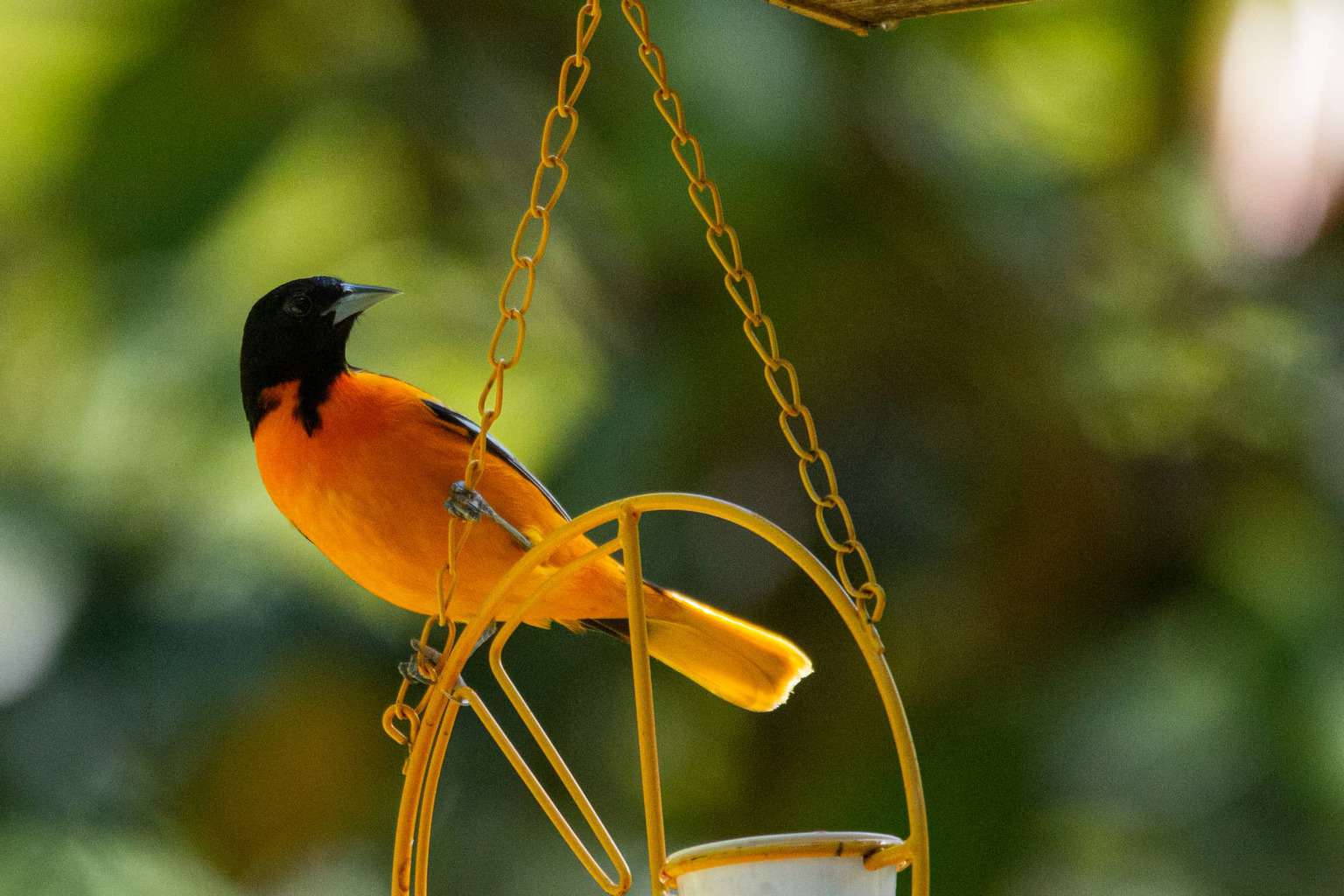
- Scientific Name: Icterus galbula
- Length: 5.8 to 7.8 inches
- Weight: 2.3 to 3.5 ounces
- Wingspan: 3.5 to 4.7 inches
The Baltimore Oriole is named after Lord Baltimore’s coat of arms, which had a flaming orange color similar to the one that the bird rocks.
The bird is typically common in Pennsylvania, especially during the birds’ mating season, extending from the early spring to the beginning of the fall season.
Although you can find the bird around residential areas and backyard feeders, you’re more likely to spot one of them if you look for them in the tops of deciduous trees in wooded areas.
The bird is easily characterized by its black head and vibrant orange plumage covering the underparts, rump, and wings, which is common in males and females. However, some females might have a paler color that is more yellow than orange.
Yellow Birds in Pennsylvania
American Goldfinch
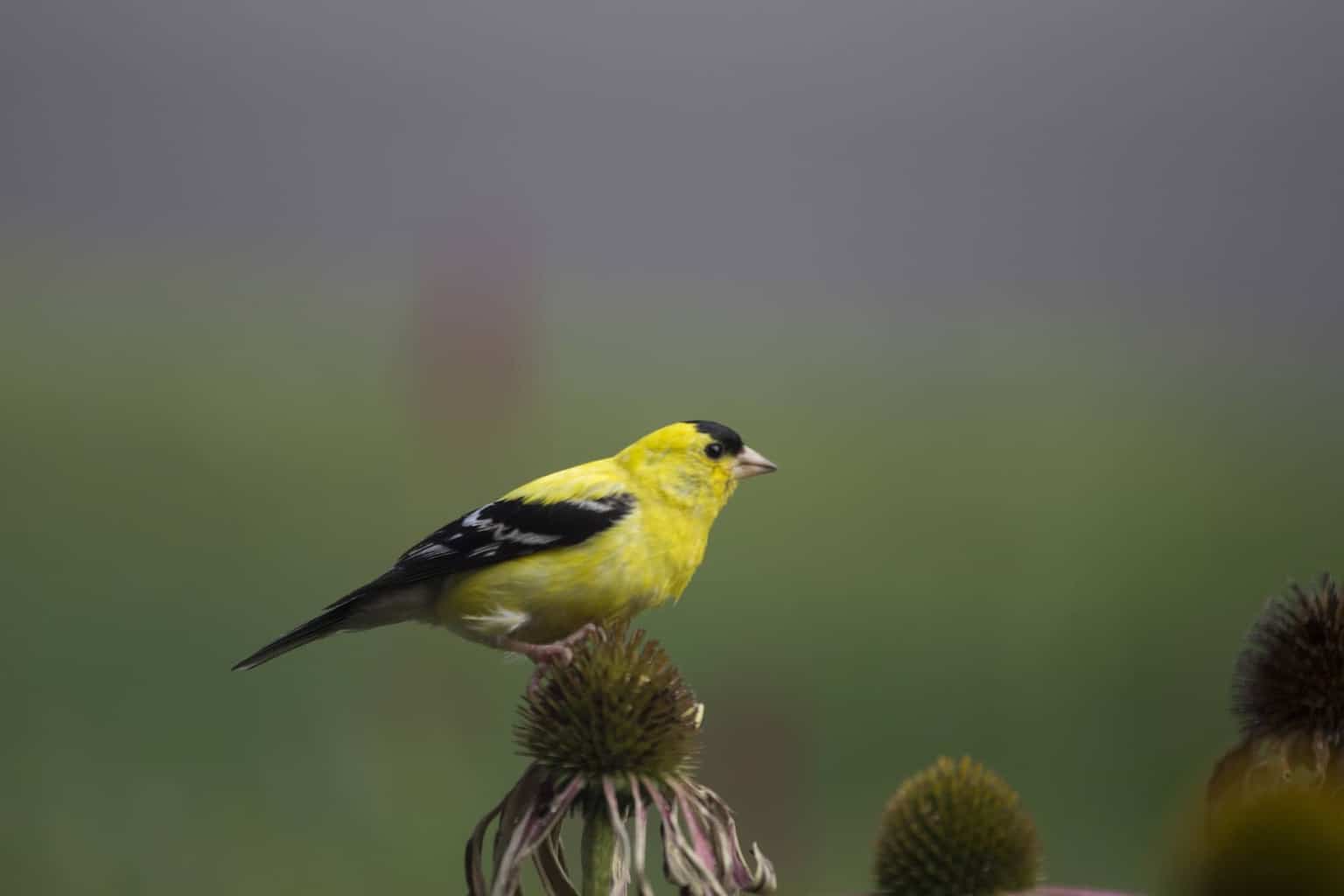
- Scientific Name: Spinus tristis
- Length: 4.3 to 5.5 inches
- Weight: 0.39 to 0.71 ounces
- Wingspan: 7.5 to 8.7 inches
Another incredibly popular bird that is also quite common in most of the United States is the American Goldfinch. This bird is typically found lurking around your backyard as they forage for their favorite food.
However, if you have a bird feeder, the bird is much more likely to land in your backyard because they love safflower seeds and black oil sunflower seeds.
American Goldfinches have a unique canary yellow plumage covering most of the birds’ bodies except their black wings and face.
American Yellow Warbler
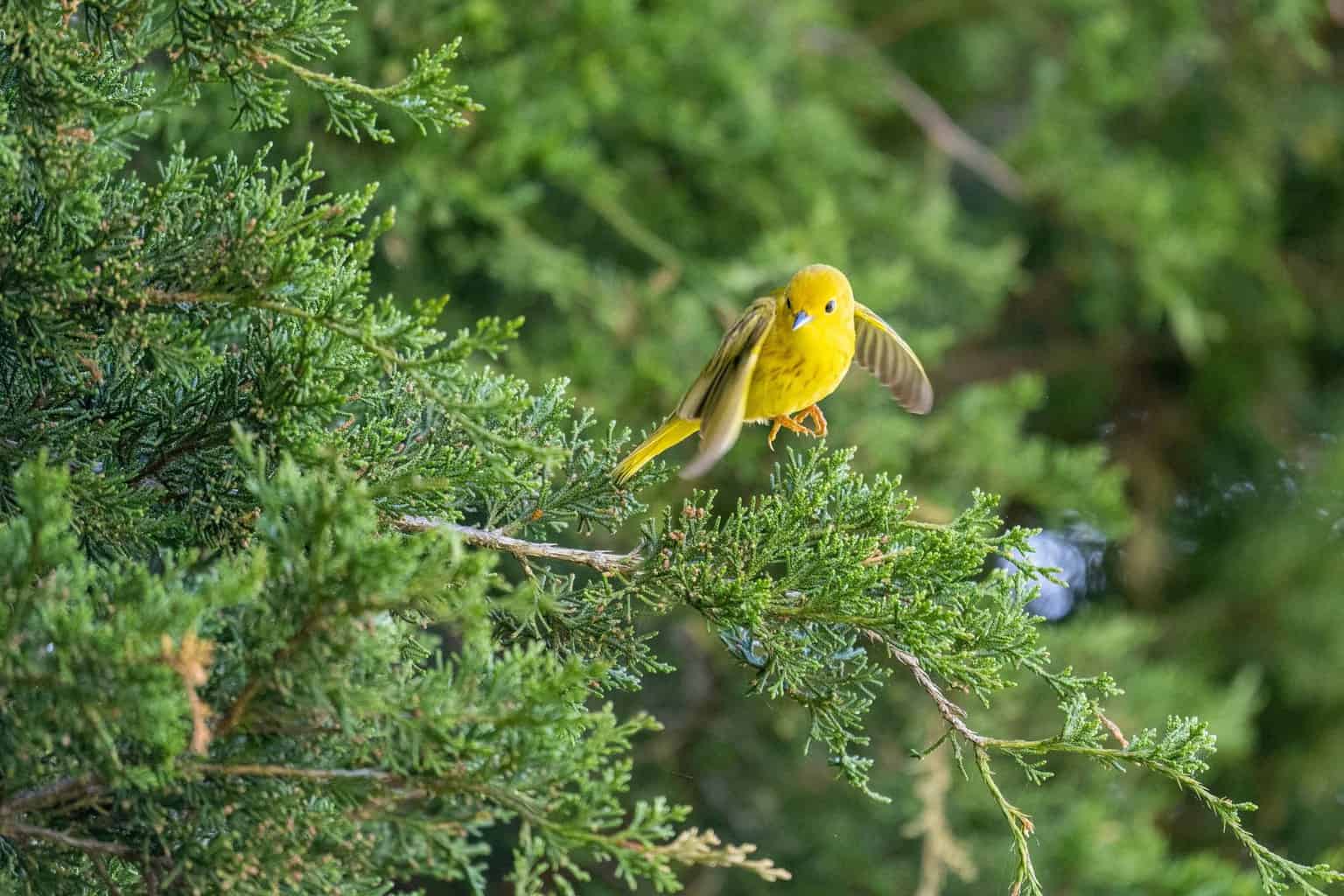
- Scientific Name: Setophaga petechia
- Length: 4.7 to 5.1 inches
- Weight: 0.3 to 0.4 ounces
- Wingspan: 6.3 to 7.9 inches
In addition to the American Goldfinch, there’s a vast range of new world warblers around the country who rock the yellow color. However, the American Yellow Warbler is the most popular one in Pennsylvania.
The relatively shy and elusive bird typically lives around lakes and forest edges and has a yellow-colored belly with a faint olive-green color on its back.
Other Birds to Watch in Pennsylvania
Ruffed Grouse
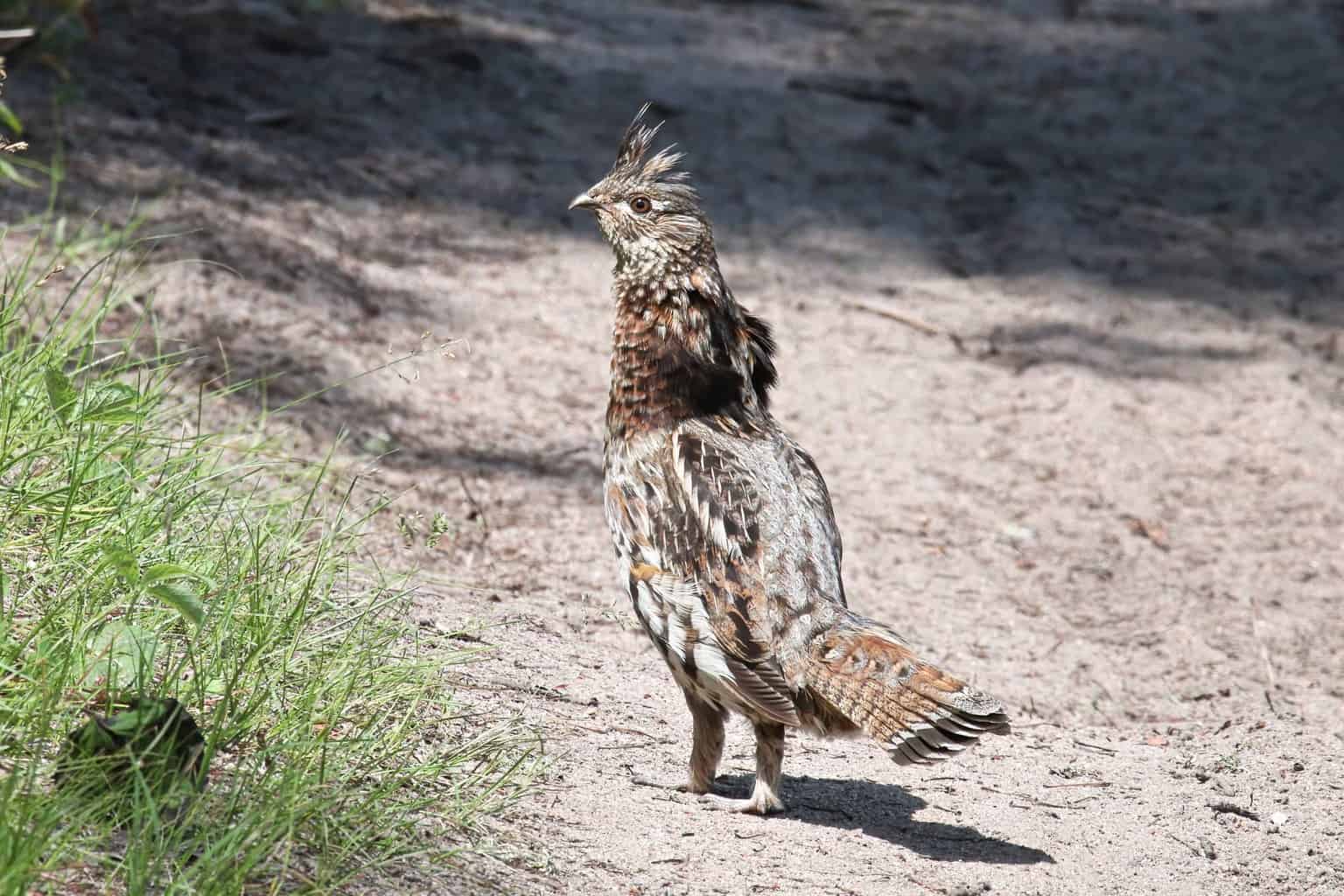
- Scientific Name: Bonasa umbellus
- Length: 15.8 to 19.8 inches
- Weight: 15.9 to 26.4 ounces
- Wingspan: 19.7 to 25.3 inches
The Ruffed Grouse is a relatively small-sized ground bird with a small triangular crest. The bird is quite plump, although it’s slim when compared to other species of grouse.
The bird has been officially recognized as Pennsylvania’s state bird and one of the most iconic state symbols since 1931.
Unfortunately, Ruffed Grouse numbers are steadily declining in the state due to climate change and loss of habitat.
Mourning Dove

- Scientific Name: Zenaida macroura
- Length: 11.8 to 12.2 inches
- Weight: 4.3 to 6.4 ounces
- Wingspan: 17.3 to 18.2 inches
The Mourning Dove is one of the most common species of doves in the state of Pennsylvania. It’s known for its buff color with black spots on the wings.
Additionally, you can identify the bird by the sky blue ring around its eyes, distinguishing it from other buff-colored doves in the state. The bird feeds on millet and seeds and prefers feeding on the ground rather than at a bird feeding station.
Rock Dove
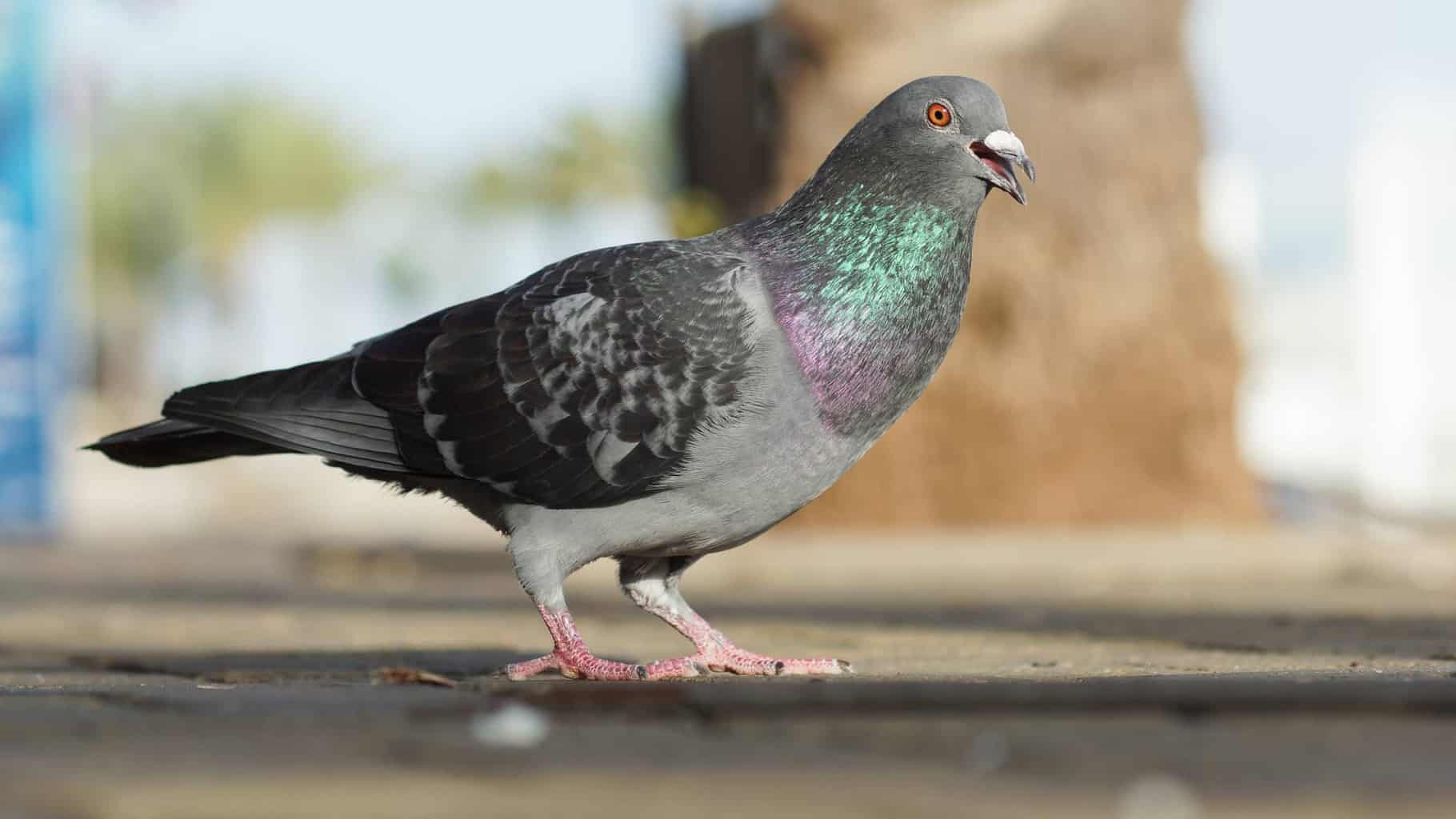
- Scientific name: Columba livia
- Length: 11.8 to 14.2 inches
- Weight: 9.3 to 13.4 ounces
- Wingspan: 19.7 to 26.4 inches
This one is also known as the “Rock Pigeon.” The tubby bird is one of the most common in Pennsylvania and is famous for its relatively large size and impressive color patch on its neck.
This patch has iridescent feathers that reflect various hues, including vibrant purple and green. The rest of the bird’s body is grey.
Black-Capped Chickadee
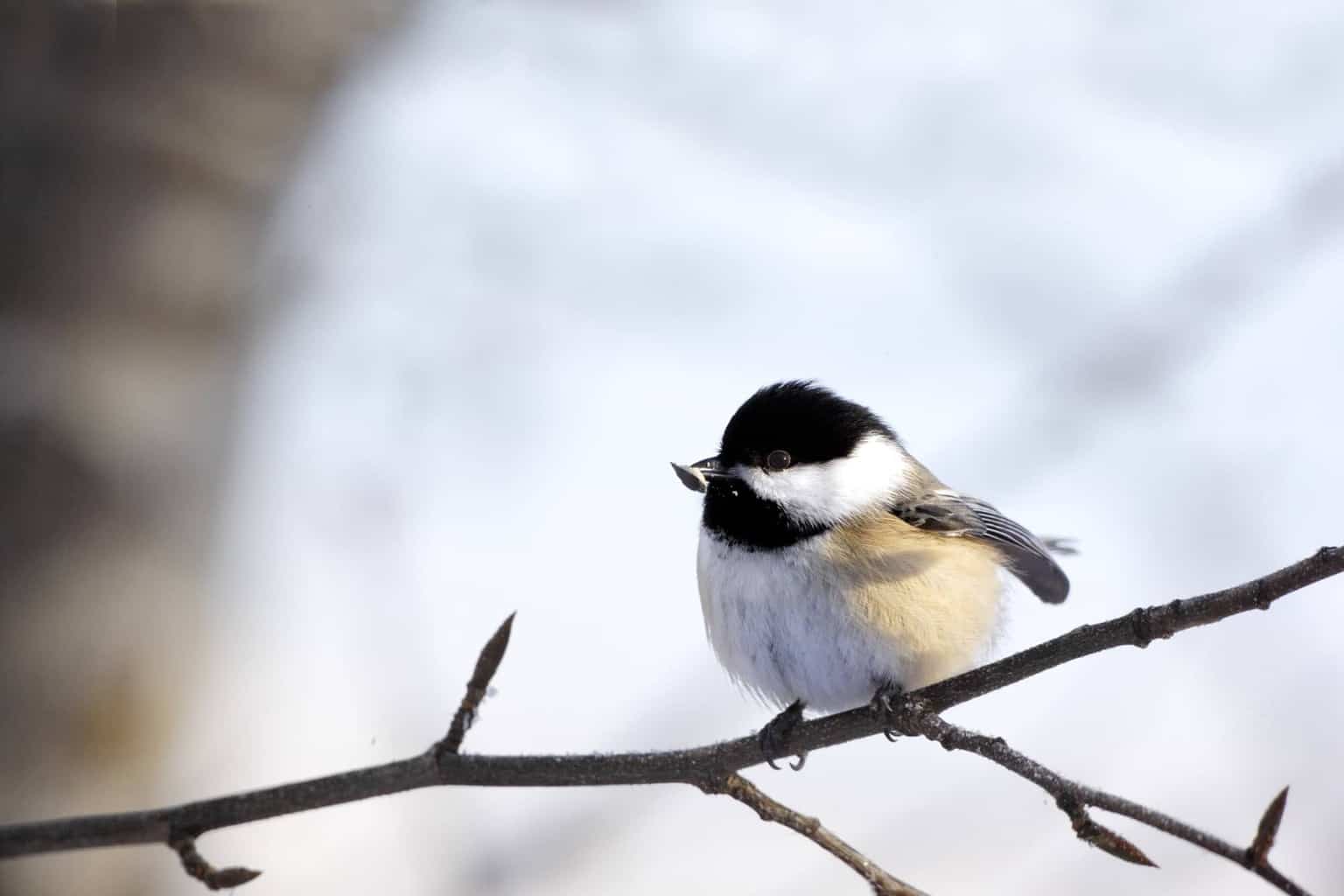
- Scientific name: Poecile atricapillus
- Length: 4.7 to 5.9 inches
- Weight: 0.3 to 0.5 ounces
- Wingspan: 6.3 to 8.3 inches
The Black-capped Chickadee is quite common in Pennsylvania and surrounding states. The bird is known for its extremely short neck and large head.
Most of the bird’s body is white, especially the underparts. Yet, you can quickly distinguish them by the black cap on their head and long tail.
They like to inhabit dense vegetation and prefer black oil sunflower seeds, should you put out a bird feeder.
White-Breasted Nuthatch
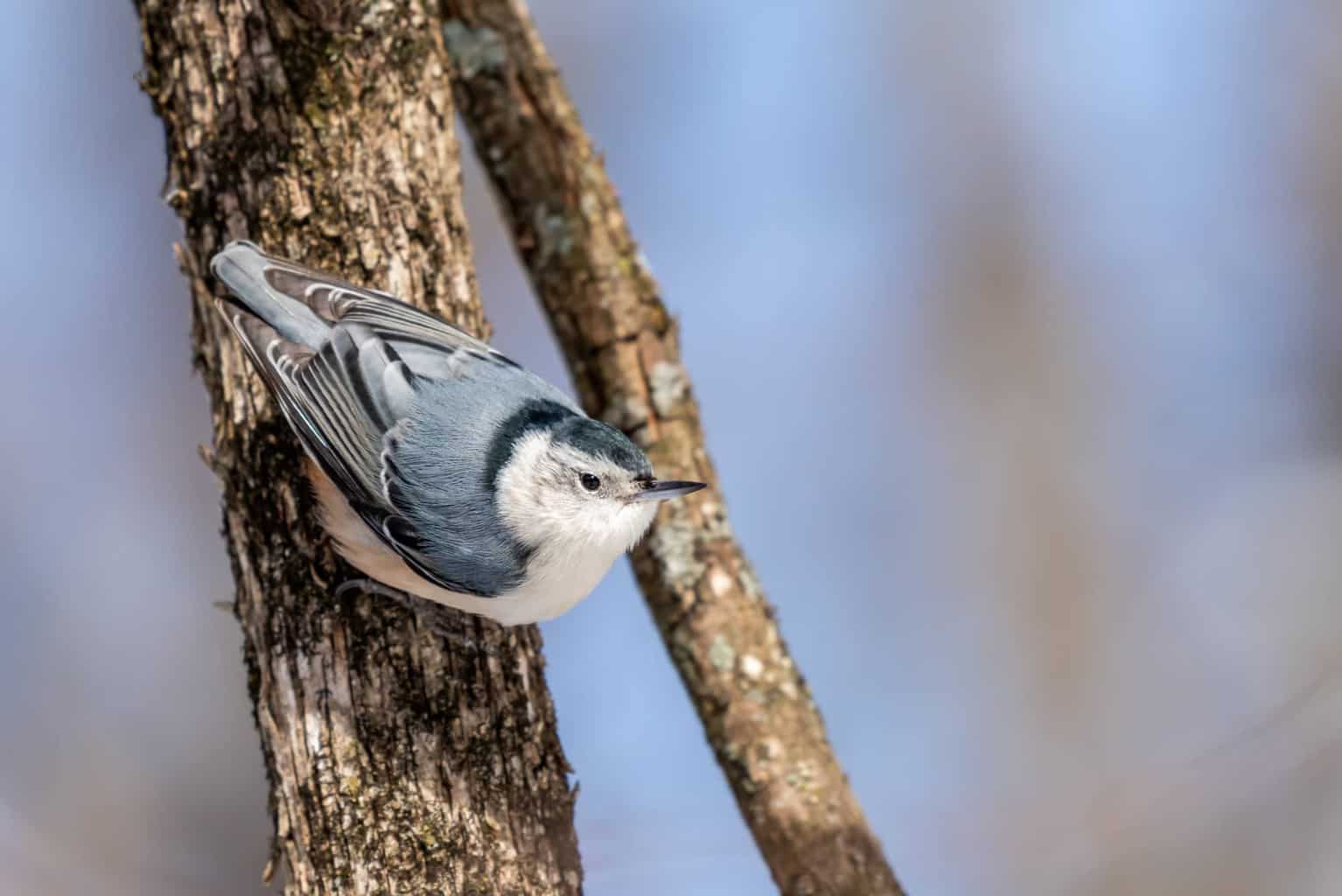
- Scientific name: Sitta carolinensis
- Length: 5.1 to 5.5 inches
- Weight: 0.6 to 1.1 ounces
- Wingspan: 7.9 to 10.6 inches
The White-breasted Nuthatch is another common backyard bird that you can easily find around residential areas in Pennsylvania due to its excellent adaptation to such conditions.
You’ll often find the birds nesting in bird boxes and trees around houses and deciduous forests around suburbs. The nuthatch has a bluish-gray back, head, and rump, as well as white underparts and breasts.
European Starling
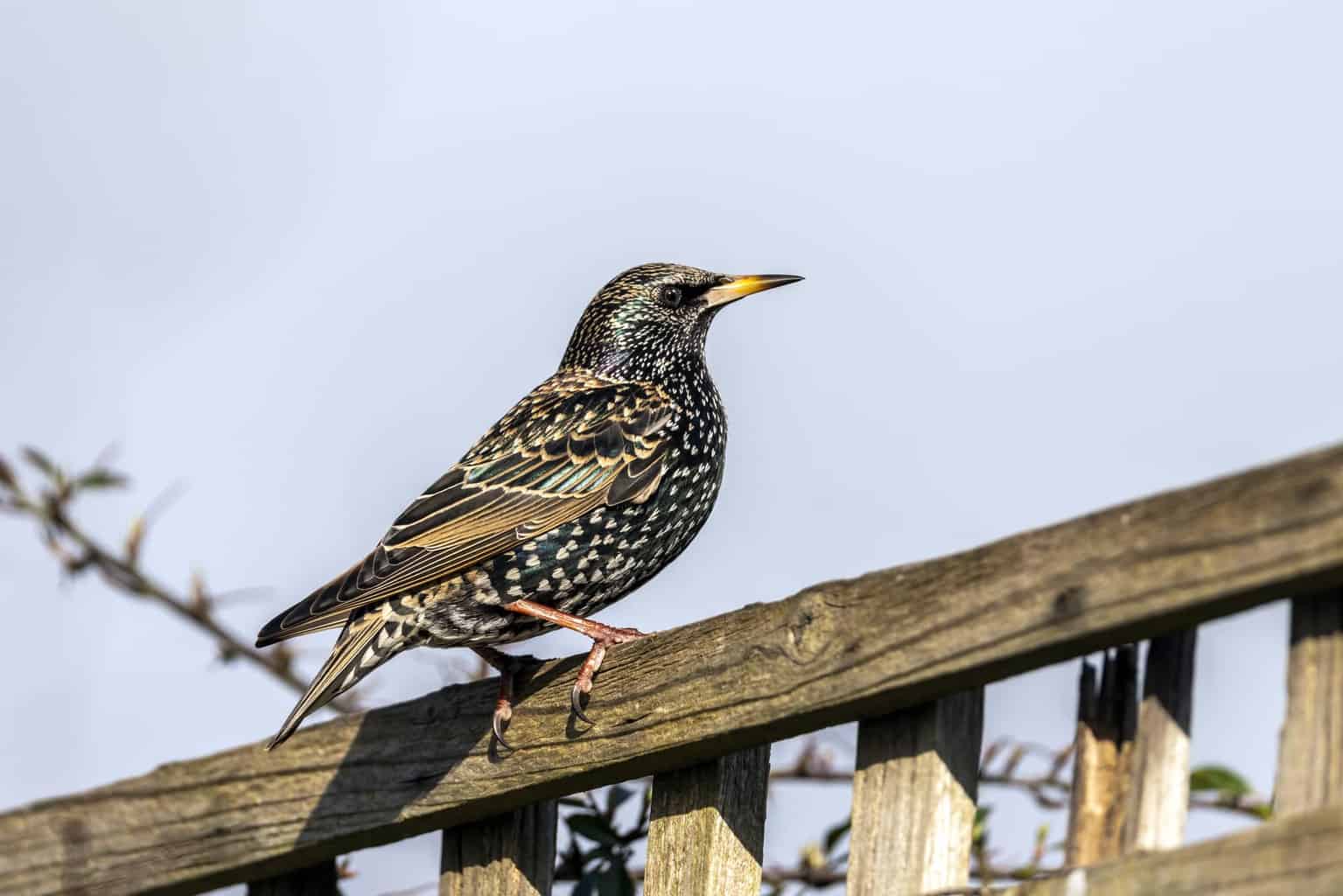
- Scientific name: Sturnus vulgaris
- Length: 7.9 to 9.1 inches
- Weight: 2.1 to 3.4 ounces
- Wingspan: 12.2 to 15.8 inches
European Starlings arrived in the United States in European ships during the late 19th century. This aggressive bird proved to be most resilient, and the species has been growing exponentially all over the continent since then!
When viewed from certain angles, these slender male birds are known for their black plumage with iridescent hues of green and purple. Females have an equally impressive, heavily spotted plumage that covers most of their brown-feathered bodies.
Brown-Headed Cowbirds
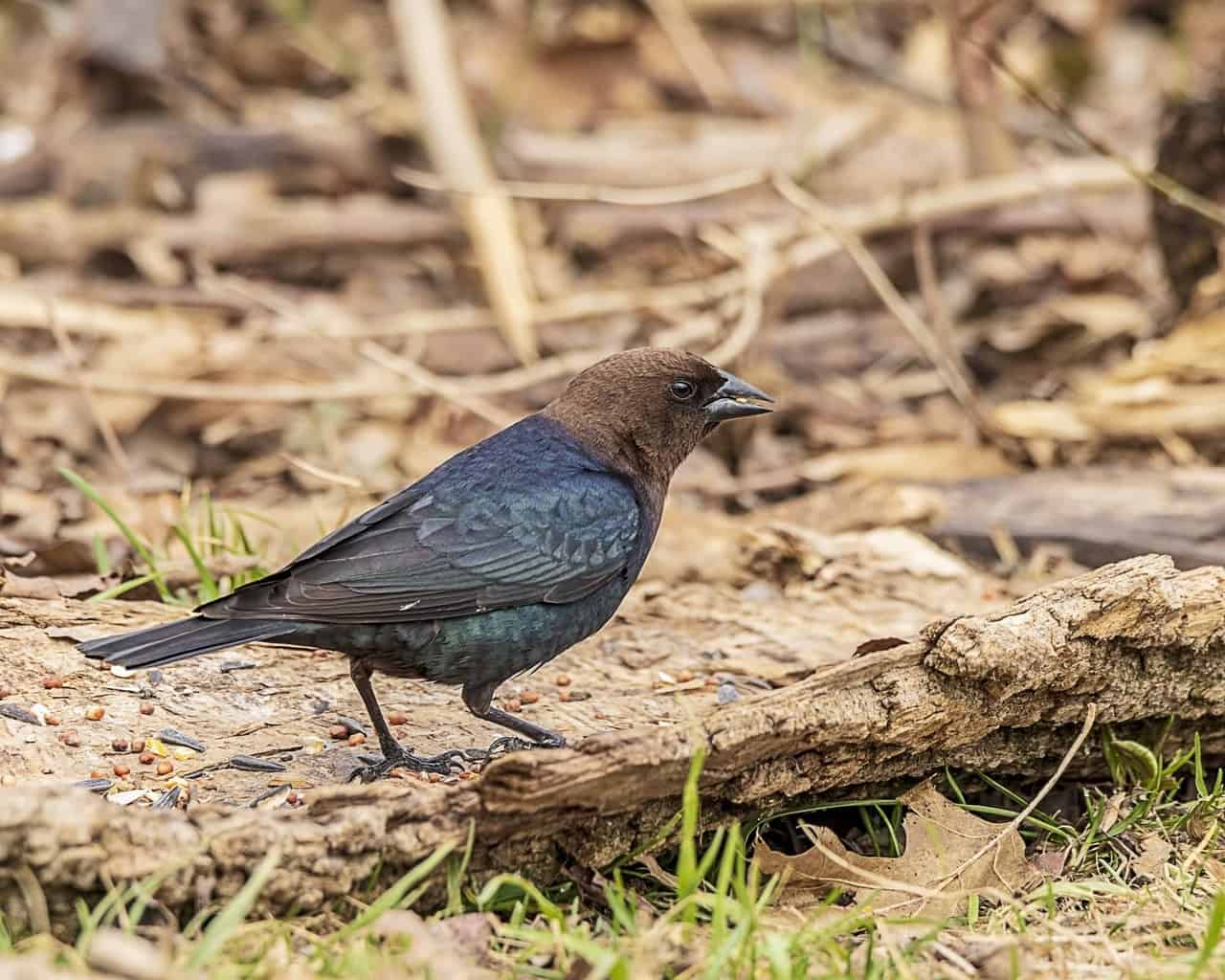
- Scientific Name: Molothrus ater
- Length: 7.5 to 8.7 inches (males) – 6.3 to 7.9 inches (females)
- Weight: 1.5 to 1.8 ounces (males) – 1.3 to 1.6 ounces (female)
- Wingspan: 14.0 to 14.4 inches (males) – 10.0 to 12.6 inches (females)
The Brown-headed Cowbird is one of the continent’s native birds. However, they’re considered a huge nuisance to other birds due to their brood parasitic behavior.
Female cowbirds usually land in other birds’ nests while the bird is away. They then destroy one of the eggs and replace it with one of their own to be raised and fed by the other bird.
The bird has shiny black-colored feathers covering most of its body except the face, where the plumage is a deep brown.
American Crow
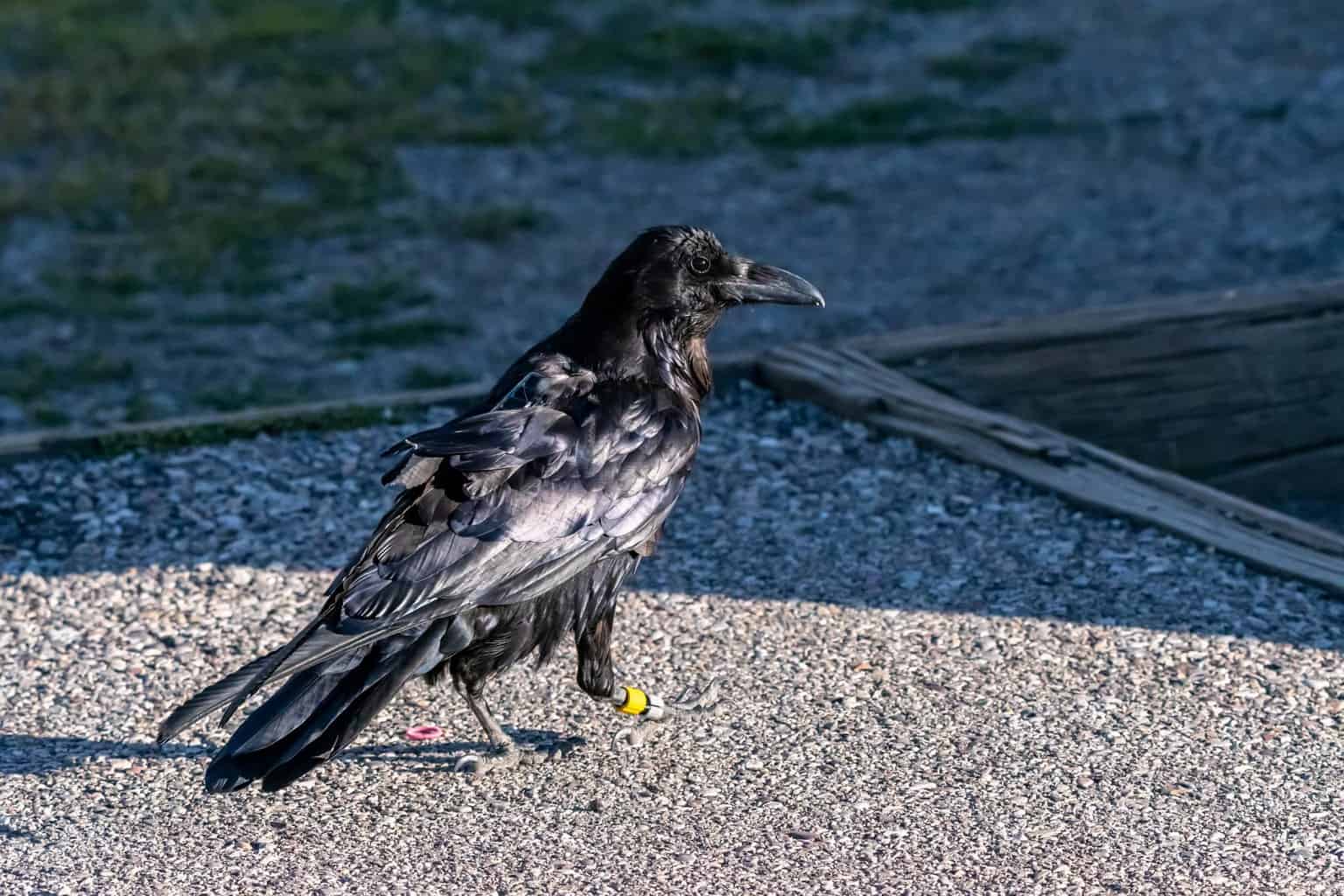
- Scientific Name: Corvus brachyrhynchos
- Length: 15.8 to 20.9 inches
- Weight: 11.2 to 21.9 ounces
- Wingspan: 33.5 to 39.4 inches
American Crows are extremely common in the Northeast as well as other areas of the United States.
This familiar bird has earned an iconic status due to its unique call and all-black body. However, you should also know that crows are very friendly and intelligent as well! They favor nesting in communal roosts numbering in the hundreds on occasion.
Final Thoughts
There you have it! A brief list of some of the most interesting and colorful birds that you can check off of your bird list in the state of Pennsylvania.
As you can see, the state’s geographical location allows it to house a massive variety of birds with different habitats, colors, patterns, and behaviors! Yet, while bird watching in the state, you should come across an even more comprehensive range of birds!






